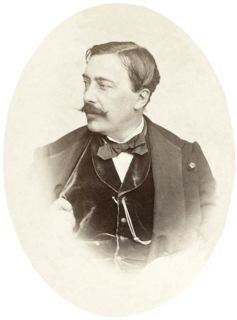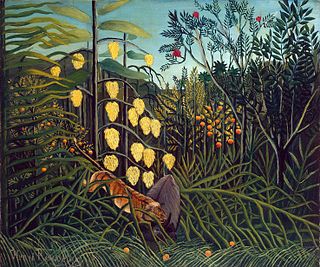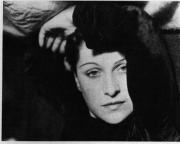External links
| | This article about a documentary film about the arts is a stub. You can help Wikipedia by expanding it. |
| Visit to Picasso | |
|---|---|
| Directed by | Paul Haesaerts |
Release date | 1949 |
Running time | 21 min |
| Country | Belgium |
| Language | Belgian |
Visit to Picasso ("Bezoek aan Picasso") is a short Belgian documentary film from 1949 about painter Pablo Picasso, directed by Belgian filmmaker Paul Haesaerts. In an effort to capture the nature of Picasso's creative process, Paul Haesaerts asked the Spanish painter to apply his magical brushstrokes to large glass plates as Haesaerts filmed from the other side. [1] This film actually predated the more famous art film The Mystery of Picasso (1956) by Henri-Georges Clouzot, in which Picasso painted on large transparent canvases as the director filmed from the other side. [1]
The filming took place in Picasso's studio in Vallauris. [2]
In 1951, Visit to Picasso was nominated for best documentary by the British Academy of Film and Television Arts (BAFTA).
Haesaerts shows opening images of Picasso books, then switches to a series of works by the artist in chronological order. Then the artist paints and sculpts art works. [2]

Pablo Ruiz Picasso was a Spanish painter, sculptor, printmaker, ceramicist and theatre designer who spent most of his adult life in France. Regarded as one of the most influential artists of the 20th century, he is known for co-founding the Cubist movement, the invention of constructed sculpture, the co-invention of collage, and for the wide variety of styles that he helped develop and explore. Among his most famous works are the proto-Cubist Les Demoiselles d'Avignon (1907), and the anti-war painting Guernica (1937), a dramatic portrayal of the bombing of Guernica by German and Italian air forces during the Spanish Civil War.

René François Ghislain Magritte was a Belgian surrealist artist, who became well known for creating a number of witty and thought-provoking images. Often depicting ordinary objects in an unusual context, his work is known for challenging observers' preconditioned perceptions of reality. His imagery has influenced pop art, minimalist art, and conceptual art.

Visual art of the United States or American art is visual art made in the United States or by U.S. artists. Before colonization there were many flourishing traditions of Native American art, and where the Spanish colonized Spanish Colonial architecture and the accompanying styles in other media were quickly in place. Early colonial art on the East Coast initially relied on artists from Europe, with John White the earliest example. In the late 18th and early 19th centuries, artists primarily painted portraits, and some landscapes in a style based mainly on English painting. Furniture-makers imitating English styles and similar craftsmen were also established in the major cities, but in the English colonies, locally made pottery remained resolutely utilitarian until the 19th century, with fancy products imported.

David Hockney is an English painter, draftsman, printmaker, stage designer, and photographer. As an important contributor to the pop art movement of the 1960s, he is considered one of the most influential British artists of the 20th century.

Henri Julien Félix Rousseau was a French post-impressionist painter in the Naïve or Primitive manner. He was also known as Le Douanier, a humorous description of his occupation as a toll and tax collector. He started painting seriously in his early forties; by age 49, he retired from his job to work on his art full-time.

Les Demoiselles d'Avignon is a large oil painting created in 1907 by the Spanish artist Pablo Picasso. The work, part of the permanent collection of the Museum of Modern Art, portrays five nude female prostitutes in a brothel on Carrer d'Avinyó, a street in Barcelona, Spain. Each figure is depicted in a disconcerting confrontational manner and none is conventionally feminine. The women appear slightly menacing and are rendered with angular and disjointed body shapes. The figure on the left exhibits facial features and dress of Egyptian or southern Asian style. The two adjacent figures are shown in the Iberian style of Picasso's native Spain, while the two on the right are shown with African mask-like features. The ethnic primitivism evoked in these masks, according to Picasso, moved him to "liberate an utterly original artistic style of compelling, even savage force."

Alfred Émile Léopold Stevens was a Belgian painter, known for his paintings of elegant modern women. After gaining attention early in his career with a social realist painting depicting the plight of poor vagrants, he achieved great critical and popular success with his scenes of upper-middle class Parisian life. In their realistic style and careful finish, his works reveal the influence of 17th-century Dutch genre painting.

Primitivism is a mode of aesthetic idealization that either emulates or aspires to recreate "primitive" experience. It is also defined as a philosophical doctrine that considers "primitive" peoples as more noble than civilized peoples and was an offshoot of a nostalgia for a lost Eden or Golden Age.

Henriette Theodora Markovitch, known as Dora Maar, was a French photographer, painter, and poet. A romantic partner of Pablo Picasso, Maar was depicted in a number of Picasso's paintings, including his Portrait of Dora Maar and Dora Maar au Chat.

The Old Guitarist is an oil painting by Pablo Picasso, which he created in late 1903 and early 1904. It depicts an elderly musician, a haggard man with threadbare clothing, who is hunched over his guitar while playing in the streets of Barcelona, Spain. It is on display at the Art Institute of Chicago as part of the Helen Birch Bartlett Memorial Collection.
Johan Wilhelm Klüver was an electrical engineer at Bell Telephone Laboratories who founded Experiments in Art and Technology. Klüver lectured extensively on art and technology and social issues to be addressed by the technical community. He published numerous articles on these subjects. Klüver curated for fourteen major museum exhibitions in the United States and Europe. He received the prestigious Ordre des Arts et des Lettres award from the French government.

The Mystery of Picasso is a 1956 French documentary film directed by Henri-Georges Clouzot. In it, the painter Pablo Picasso produces 20 drawings and paintings, at first using inks that bleed through the paper on which he is drawing, with the act of creation filmed in real-time from the backside of the easel, and later using oil paints, with Clouzot employing a stop-motion-like effect to depict the development and modification of the works. The film begins with Picasso creating simple marker drawings in black and white, and he gradually progresses to full-scale collages and oil paintings.
Sam Dillemans is a Belgian painter.

Collage is a technique of art creation, primarily used in the visual arts, but in music too, by which art results from an assemblage of different forms, thus creating a new whole.

Fauvism /ˈfoʊvɪzm̩/ is the style of les Fauves, a group of early 20th-century modern artists whose works emphasized painterly qualities and strong color over the representational or realistic values retained by Impressionism. While Fauvism as a style began around 1904 and continued beyond 1910, the movement as such lasted only a few years, 1905–1908, and had three exhibitions. The leaders of the movement were André Derain and Henri Matisse.
Paul Haesaerts was a multi talented Belgian artist.

Ferdinand de Braekeleer, sometimes spelled as Ferdinand de Braeckeleer, was a Flemish painter and printmaker. He is known for his paintings of genre scenes, church interiors, historic events, religious scenes, cityscapes, market scenes and market still lifes. He is called 'the Elder' to distinguish him from his son with the same name, who was also a painter.
Henry Heydenryk Jr. (1905–1994) was a Dutch American frame maker, historian, writer and designer. He was the fourth generation descendant of a family-run business, The House of Heydenryk (Heijdenrijk). Founded in Amsterdam in 1845, the company is one of the world’s oldest framing companies. The firm made and supplied reproductions and antiques to the Tate and National Gallery museums in England, the Rijksmuseum in the Netherlands and for many other important museums and private collectors including Baron Thyssen-Bornemisza and members of the Rothschild family.

Proto-Cubism is an intermediary transition phase in the history of art chronologically extending from 1906 to 1910. Evidence suggests that the production of proto-Cubist paintings resulted from a wide-ranging series of experiments, circumstances, influences and conditions, rather than from one isolated static event, trajectory, artist or discourse. With its roots stemming from at least the late 19th century this period can be characterized by a move towards the radical geometrization of form and a reduction or limitation of the color palette. It is essentially the first experimental and exploratory phase of an art movement that would become altogether more extreme, known from the spring of 1911 as Cubism.

Les Peintres Cubistes, Méditations Esthétiques, is a book written by Guillaume Apollinaire between 1905 and 1912, published in 1913. This was the third major text on Cubism; following Du "Cubisme" by Albert Gleizes and Jean Metzinger (1912); and André Salmon, Histoire anecdotique du cubisme (1912).